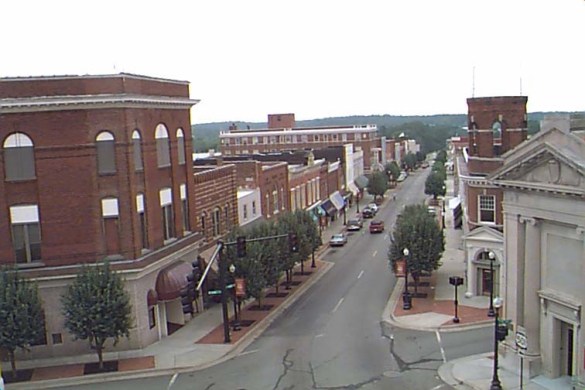
South Boston Historic Downtown – South Boston, Virginia. Image Credit: Virginia Is For Lovers
Back in August, one of my friends shared this article on Facebook. Immediately intrigued, I clicked on it, curious about what context the headline gave.
Within seconds, I couldn’t believe which town they were referencing.
South Boston, Virginia, is just a few miles away from where my in-laws have their farm. It’s a beautiful town, formerly Boyd’s Ferry, first established in 1796. There are multiple places in the town that are listed on the National Register of Historic Places.
Here’s the link to the original article:
I’m definitely not an expert in economics, although I did take ECON 111 at Longwood and got quite an education during that semester. However, I’ve always admired small-town America, and I find myself researching different towns, counties, and rural areas, particularly in Virginia. I wrote several research papers on Appalachia between high school and college, and have always been fascinated with the tragedies and triumphs of the vast region.
—
South Boston is one of the towns in Halifax County. Like many small towns, there’s been what referred to as a rolling recession in the town since the 1990s. The town has about 8,000 residents, and the workforce has decreased by about 25 percent in the last two decades. This particular article discussed the effects of free trade on the U.S.
Two particular movements devastated Halifax County and its workforce: The North American Free Trade Agreement (NAFTA) in 1994, and then when China entered the World Trade Organization (WTO). While the unemployment rate in the U.S. was trending toward historic lows, the unemployment rate in Halifax County surged. The highest rate recorded in the county was 13.9 percent.
Many towns like South Boston experience a domino effect. Once manufacturing jobs dry up or leave, other businesses, seemingly unrelated or connected, also start to fade away. The dominoes keep falling, until something happens to make them stop. In South Boston, there are shells of car dealerships, empty downtown storefronts, and other evidence.
Fortunately, in South Boston, conditions have improved. The unemployment rate has held steady around five percent, far better than nearly 14 percent. A few manufacturers call South Boston home, not textiles or tobacco, but sports cars, robotics, power, and heavy electrical equipment.
Sprawling brick buildings that were once tobacco warehouses are now apartments. Two of them are now the home of the Southern Virginia Higher Education Center, where students can become certified in a number of disciplines, thanks to schools such as Longwood University, Old Dominion University, Danville Community College, and Southside Virginia Community College.
IT certificate holders have been hired at Microsoft’s data center in a neighboring county. Other certifications include nursing and welding. The massive investment is paying off.
—
I’m glad that South Boston is becoming a success story. However, I think of many areas of Appalachia where coal mining jobs, among others, have been automated, and there aren’t enough jobs in the area to make up the difference.
Until the next headline, Laura Beth 🙂
Reblogged this on ENLIGHTENMENT ANGELS.
Thank you for sharing my post!